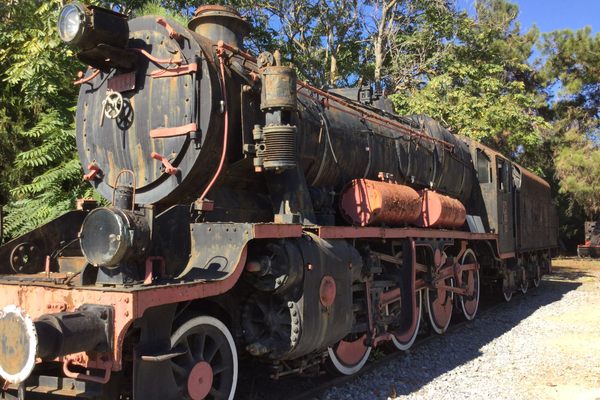Chemin de Fer Railway Museum
Rusting railcars and locomotive equipment fill this Ethiopian train graveyard.
Usually when a rail line is decommissioned, the cars and equipment simply disappear, sold off or thrown away, but this old Ethiopian line has been turned into a sort of rusty folk museum.
The Railway Station at Dire Dawa was the only formal waystation on the railway line which operated from Djibouti on the coast to Addis Ababa in the Ethiopian highlands. The railway line which was constructed and operated by a French company the Chemin de Fer Ethiopien began operations in the reign of Emperor Menelik II and was completed in 1929.
The Railway Line ceased running in the early 2000s and is currently being upgraded into a more modern service. However, when the service stopped, most of the rolling stock, trains, and carriages ended up in the Dire Dawa Station where a museum of sorts has been established.
The museum is a wonderful collection of train memorabilia slowly decaying in the Ethiopian sun. One will receive a tour from the curator, an elderly man who was employed by the railway and speaks a smattering of English, fluent Amharic, and good French, the operational language of the railway. French signs can still be seen hanging in the workshops and there are railway carriages from the 1st, 2nd, and 3rd classes dating from the 1950s. There are a selection of diesel engines and some minor gems such as the rusted shell of an Italian locomotive from the 1940s and some wagons supposedly gifted to the former Communist regime by Mugabe and used to transport tanks.
Wandering around, with bee-eaters providing little bursts of color as they flit between the old telegraph wires, the curator is perfectly happy for all the exhibits to be handled and clambered on, actively encouraging people to “get in,” unafraid that a little bit more of an engine may crumble into the rust colored soil.
Know Before You Go
Once you arrive in Dire Dawa, get a Bajaj from the airport to the Mekonnen Hotel, opposite the station. There is good beer on the veranda. The entrance to the museum is through a gateway to the left of the main station building. There will be a policeman on guard here who will likely not speak English. If persistent he will phone the curator who will arrive in about 20mins. A guide or rudimentary Amharic are helpful. There was no formal charge for the museum but contributions are welcome.
















Follow us on Twitter to get the latest on the world's hidden wonders.
Like us on Facebook to get the latest on the world's hidden wonders.
Follow us on Twitter Like us on Facebook